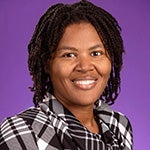September 28, 2022
COE faculty publish research on DEI, mental health, library & information science, co-teaching and more
Dr. Kawanna Bright was an author on “Incorporating Diversity, Equity, and Inclusion (DEI) into Research” in the Journal of Education for Library and Information Science.
The abstract reads:
Despite demographic changes which indicate larger numbers of racial and ethnic minorities make up most of American society, library and information science (LIS) research remains focused on majority groups. This work proposes ways in which researchers and LIS educators can incorporate more diversity, equity, and inclusion (DEI) into their research, especially by making racial and ethnic minorities more visible in it. The main ideas discussed in this regard deal with self-awareness, positionality, and sampling methods. While not exhaustive, the suggestions offered here are straightforward ways in which researchers can become more intentional in their inclusion of historically excluded populations into their research. The ideas shared in this work are aimed at aiding those who are considering the incorporation of DEI topics into their existing research agendas, as well as helping LIS educators set the foundation of sound research which values DEI when guiding students’ research endeavors.
Dr. Xi Lin and Dr. Phyllis Broughton published “Bridging Generational Gaps in Teaching and Learning Across Generations” in the Delta Kappa Gamma Bulletin’s International Journal for Professional Educators.
The abstract reads:
Understanding the expectations of instructors across generations would help faculty better serve students’ needs and develop an engaging learning environment. This article examines faculty’s and students’ expectations of instructors’ behaviors in face-to-face and online course settings. It also summarizes the general characteristics of generations and identifies generational gaps in teaching and learning. The authors discuss changing roles and implications of student engagement using technology. Findings of the study suggest an opportunity to dialogue and collaborate toward supporting more engaging and active learning in both online and face-to-face teaching and learning.
Dr. Janeé Avent Harris and Dr. Loni Crumb published an article, “Black Pastors and Counselors: Creating Meaningful Collaborations to Enhance Mental Health Awareness in Rural Areas” in the Journal of Professional Counseling: Practice, Theory & Research.
The abstract reads:
Black communities in rural areas offer a number of strengths including familial networks, resource sharing, and access to spiritual communities. These regions also face a host of challenges related to economic, educational, and social disadvantages, which leads to exacerbated psychological and emotional distress among residents. However, access to mental health professionals and services is largely limited in rural communities. Thus, community stakeholders, such as Black pastors and churches, could serve as collaborative partners with counselors to promote mental health awareness and increase supports in rural areas.
Dr. Kawanna Bright is an author on “Conducting international research in the field of library and information science: challenges and approaches” in the AIB studi journal.
The abstract reads:
International comparative research in the field of Library and Information Science (LIS) examines processes and phenomena related to libraries and other information organizations and their users, focusing on differences and similarities between countries or cultures. International research is difficult to conduct due to language barriers, ethical concerns and the legacy of the colonial research model. This article presents an international research project undertaken by members of the International Federation of Library Associations (IFLA) Library Theory and Research (LTR) Section that has investigated approaches to teaching research methods in LIS programs around the world. The article focuses on the research design of the project, on ethical issues of research and on the collection of multilingual data. It discusses the challenges inherent in conducting international research and outlines approaches to increase the geographic and linguistic diversity of study participants. The LTR research team adopted several strategies to recruit participants from multiple countries and collect data in three languages. The recruitment announcements were distributed through international and regional lists in multiple languages. The survey tool was translated from English to Spanish and French, and interviews were conducted in English and Spanish. The authors also discuss the methodological advantages of mixed-method design and the benefits and limitations of using surveys and interviews in international research. It discusses the challenges inherent in conducting international research and outlines approaches to increase the geographic and linguistic diversity of study participants. The LTR research team adopted several strategies to recruit participants from multiple countries and collect data in three languages. The recruitment announcements were distributed through international and regional lists in multiple languages. The survey tool was translated from English to Spanish and French, and interviews were conducted in English and Spanish. The authors also discuss the methodological advantages of mixed-method design and the benefits and limitations of using surveys and interviews in international research. It discusses the challenges inherent in conducting international research and outlines approaches to increase the geographic and linguistic diversity of study participants. The LTR research team adopted several strategies to recruit participants from multiple countries and collect data in three languages. The recruitment announcements were distributed through international and regional lists in multiple languages. The survey tool was translated from English to Spanish and French, and interviews were conducted in English and Spanish. The authors also discuss the methodological advantages of mixed-method design and the benefits and limitations of using surveys and interviews in international research. The LTR research team adopted several strategies to recruit participants from multiple countries and collect data in three languages. The recruitment announcements were distributed through international and regional lists in multiple languages. The survey tool was translated from English to Spanish and French, and interviews were conducted in English and Spanish. The authors also discuss the methodological advantages of mixed-method design and the benefits and limitations of using surveys and interviews in international research. The LTR research team adopted several strategies to recruit participants from multiple countries and collect data in three languages. The recruitment announcements were distributed through international and regional lists in multiple languages. The survey tool was translated from English to Spanish and French, and interviews were conducted in English and Spanish. The authors also discuss the methodological advantages of mixed-method design and the benefits and limitations of using surveys and interviews in international research. and the interviews were conducted in English and Spanish. The authors also discuss the methodological advantages of mixed-method design and the benefits and limitations of using surveys and interviews in international research. and the interviews were conducted in English and Spanish. The authors also discuss the methodological advantages of mixed-method design and the benefits and limitations of using surveys and interviews in international research.
Dr. Kristen Gregory was an author on the recently published article, “Women in Faculty Development Leadership: A Co-Mentoring Model,” in the Journal of Faculty Development. This article was also chosen as the featured article in the September issue and were invited to present on it during the Magna Online Seminar on October 11th.
The abstract reads:
Women are well-represented in faculty development leadership positions, yet there are inconsistent support systems in place for women leaders. Faculty development requires a unique leadership skill set to work with stakeholders across the institution. We conducted a collaborative self-study to investigate how co-mentorship provides women faculty developers a space to explore and develop leadership identity and practice. Data included teaching philosophies, journals, and transcribed co-mentoring meetings. Using grounded theory, three themes emerged: proficiency, self-efficacy, and advocacy. Considering the interplay between the themes, we conceived the Faculty Development Leadership Co-Mentoring Model as a promising approach for supporting women leaders.
Dr. Loni Crumb, Dr. Crystal Chambers, and Dr. Kristen Cuthrell published an article for the Journal of Multicultural Education called “Rural cultural wealth: dismantling deficit ideologies of rurality.” An interesting aspect of this article is they partnered with Max Avent from Rocky Mount, a rural community organizer/stakeholder who helped inform the constructs.
The abstract reads:
Purpose
Rural education research has historically been cast in a deficit lens, with rural places characterized by their problems or shortcomings, as if the way of understanding rural itself is to compare it to nonrural locales. These intransigent and narrow perceptions of rurality hinders recognition of the assets and possibilities of rural places. The purpose of this paper is to apply community-empowering, transgressive knowledge to analyses of rural communities to advance rural education research and practice.
Design/methodology/approach
In this conceptual paper, the authors propose an asset-based, conceptual framework to ground rural research and education practices: rural cultural wealth.
Findings
The authors describe and explore the concept of rural cultural wealth within the context of education. Furthermore, the authors discuss the dynamics of rurality and propose four constructs that comprise the rural cultural wealth framework, rural resourcefulness, rural ingenuity, rural familism and rural community unity, and consider implications for future research and practice.
Originality/value
The goal of this paper is to advance a rural cultural wealth framework aimed to interrupt social reproduction of educational inequities that impact rural students.







